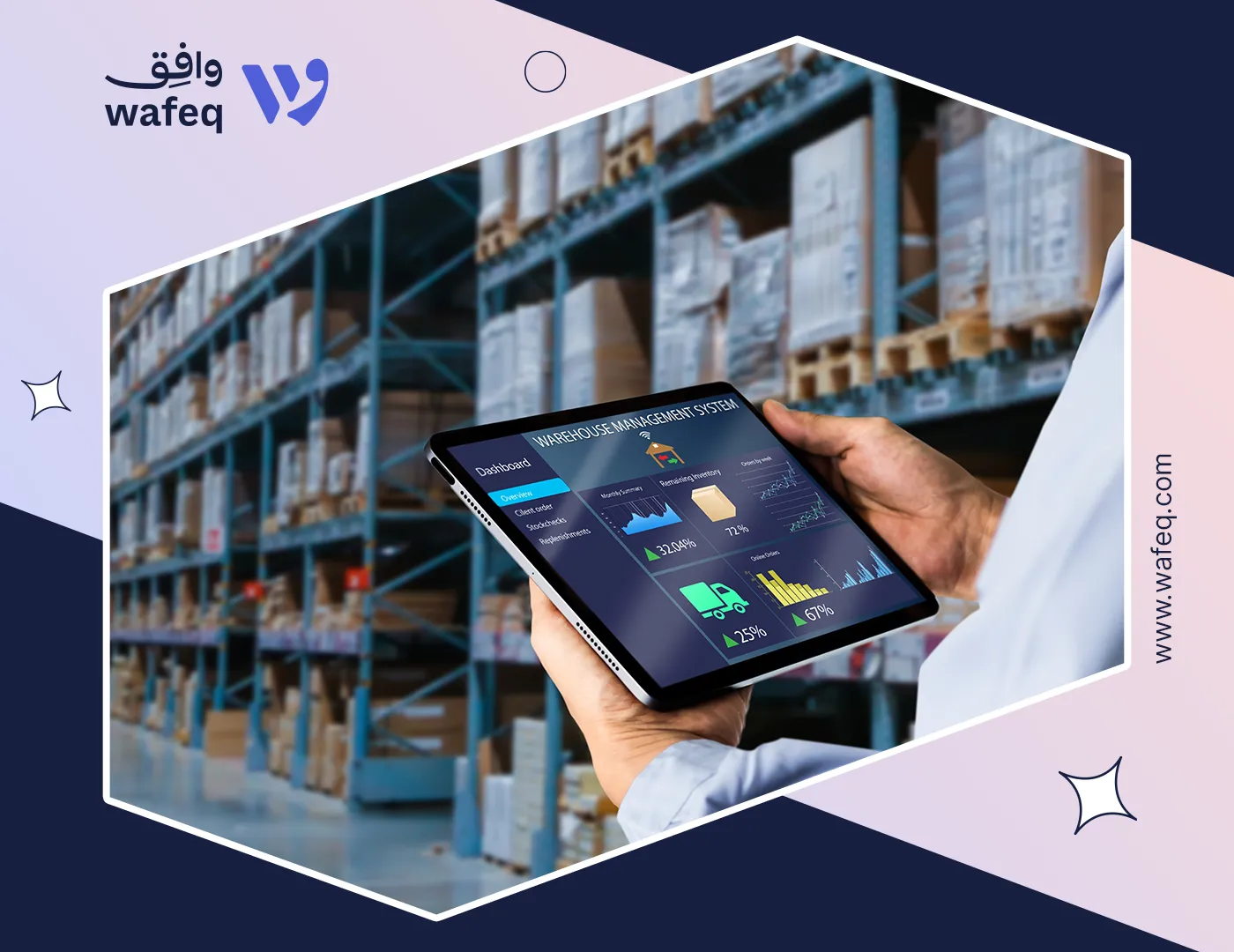Exploring E-commerce Models and Their Financial Impact on Business

E-commerce has transformed businesses' operations, creating new channels for buying and selling goods and services worldwide. From direct sales to consumers to complex transactions between companies, various e-commerce models have emerged to meet the diverse needs of markets. Each type of e-commerce presents unique financial considerations and operational challenges that businesses and finance professionals must understand to ensure success and compliance.
This article explores the main types of e-commerce, highlighting their characteristics and the critical financial aspects involved, providing valuable insights for companies aiming to optimize their digital
What is E-commerce?
E-commerce, or electronic commerce, refers to buying and selling goods and services on the internet. It encompasses all commercial transactions managed through digital platforms, including websites, mobile apps, social media, and online marketplaces.
Since its inception in the 1990s, e-commerce has rapidly evolved, becoming a fundamental part of the global economy. It enables businesses of all sizes to reach wider markets, reduce operational costs, and offer customers greater convenience.
In financial terms, e-commerce introduces new dynamics such as digital payments, real-time sales tracking, and complex taxation rules. Understanding e-commerce is essential for businesses and finance professionals to accurately manage revenue recognition, tax compliance, and financial reporting.
Main Types of E-commerce
E-commerce can be categorized into several primary types based on the nature of the transaction participants. Each type serves different market needs and involves specific financial and operational considerations.
- Business-to-Consumer (B2C) This is the most common form of e-commerce, where businesses sell products or services directly to individual consumers. Examples include online retailers like Noon or local e-commerce stores selling clothes, electronics, or groceries. Financially, B2C transactions often involve straightforward payment processing and consumer protection regulations.
- Business-to-Business (B2B) In B2B e-commerce, companies sell goods or services to other businesses. This includes wholesale suppliers, manufacturers, or service providers offering software solutions to enterprises. B2B transactions usually involve larger volumes, longer sales cycles, and more complex invoicing and payment terms.
- Consumer-to-Consumer (C2C) C2C platforms facilitate transactions between individual consumers, often through a third-party marketplace, like eBay or local classified ads. Financially, C2C can present challenges like payment security and tax reporting for casual sellers.
- Consumer-to-Business (C2B) In this less common model, individuals offer products or services to businesses. Examples include freelance platforms where professionals provide services to companies or consumers selling content, photos, or data to businesses.
- Business-to-Government (B2G) Businesses provide goods or services to government entities through digital platforms, often via public tenders and contracts. These transactions require compliance with government procurement regulations and specific financial documentation.
Subcategories of e-commerce and their impact on business finance management
Marketplace E-commerce
Marketplace e-commerce platforms act as intermediaries between multiple sellers and buyers, providing a single platform where products or services are listed, purchased, and delivered. This model dominates the GCC/MENA e-commerce space due to its scalability and variety.
Examples in the GCC/MENA Region
- Noon.com – A Saudi- and UAE-backed platform offering everything from electronics to groceries.
- Souq/Amazon.sa – Amazon’s Saudi portal, evolved from the original Souq.com.
- Jumia Egypt – A major regional player offering diverse product categories.
Financial Implications for Businesses
While marketplaces provide high visibility, they also come with intense competition and reliance on the platform’s policies, fees, and algorithms. Sellers may face margin pressure if they don’t differentiate their offerings. But it offers some basic advantages such as:
- Low Entry Barrier: Sellers can start with minimal investment by leveraging the marketplace’s infrastructure.
- Commission-Based Revenue: Marketplaces charge a percentage of each sale, which reduces upfront risk but can affect profit margins.
- Increased Reach and Sales Potential: Businesses gain exposure to a wide audience without heavy marketing spend.
- Inventory Flexibility: Sellers can choose between holding their own stock or using marketplace fulfillment centers, impacting cash flow and storage costs.
Social Commerce
Social commerce uses social networking platforms as direct sales channels. It includes shoppable posts, in-app product catalogs, direct-message order taking, live-stream selling, and embedded checkout features. Social commerce blends marketing, customer service, and transaction flows into one user experience, leveraging influencers, targeted ads, and instant messaging to shorten conversion paths.
GCC / MENA Examples
- Instagram Shops & Facebook Marketplace: Widely used by regional fashion brands, boutiques, and SMEs across the UAE, Saudi Arabia, and Egypt (e.g., Namshi uses Instagram for engagement; many boutique retailers sell via posts and stories.
- WhatsApp Commerce: Common for micro-merchants across KSA and Egypt who take orders via WhatsApp catalogs and payment links.
- TikTok Shop & Live Commerce: Emerging in the region with pilot launches and influencer-driven campaigns; local retailers test live shopping during promotional events.
- Local Marketplaces on Social Platforms: Sellers list via Facebook groups, Instagram DM orders, or through marketplace features on regional platforms like Dubizzle (classifieds) and Souq/Noon integrations.
Financial Implications for Businesses
- Revenue Recognition - Sales initiated via social platforms are recognized according to delivery or service terms—point-in-time for physical goods, over time for subscriptions or services. The trigger is the transfer of control, not the social post or message. - Live commerce (instant purchases in live streams) requires clear timestamped records for revenue cutoffs and refunds.
- VAT and Tax Considerations - VAT applies to social commerce sales to consumers at local rates; sellers must issue tax-compliant invoices. Cross-border social sales may trigger non-resident VAT registration obligations (e.g., KSA and UAE rules for foreign digital/online suppliers). - Informal sellers use social channels, remain subject to tax rules; revenue thresholds and local registration criteria must be monitored.
- Payment Gateways & Settlement Structures - Many social sellers use payment links (PayTabs, Checkout.com, local bank gateways) that send invoices or payment requests via direct messages. Settlement timing (T+1 to T+7) affects cash flow. - For high-volume sellers, integrated in-app checkout (where available) reduces friction but may involve platform fees and different settlement terms.
- Inventory and Cost Accounting - Inventory must be synchronized across social channels and e-commerce back-ends to prevent overselling. Real-time stock updates and centralized order management reduce reconciliation errors. - Cost tracking can be error-prone for micro-merchants using manual order handling; proper bookkeeping practices are essential to capture COGS, shipping, and returns.
- Fraud, Chargebacks & Refunds - Social commerce sees higher informal payment methods (cash on delivery, bank transfers), which increase refund and reconciliation workload. Chargebacks on card payments require robust documentation (order confirmations, delivery proofs). Refund policies communicated on social posts must align with invoices and accounting records.
- Regulatory and Compliance Requirements - Social sellers must comply with e-commerce and consumer protection laws (product descriptions, return windows, clear pricing). In KSA, the E-Commerce Law and consumer protection rules apply equally to social commerce channels. - Data privacy and messaging regulations (e.g., opt-in rules for promotional messages) must be observed. Advertisements by influencers may require disclosure and can have tax implications if influencer marketing is provided as a service.
- Operational Finance Impacts - Customer acquisition via influencers and paid social ads increases CAC and affects profitability metrics; finance teams should track marketing spend per channel and LTV: CAC ratios specific to social commerce. - Sellers should plan for increased working capital needs when fast-scaling via social platforms, due to potential delays between order receipt and supplier fulfillment.
Subscription-Based E-commerce
Subscription-based e-commerce is a model in which customers pay a recurring fee—weekly, monthly, or annually- to receive products or services on a regular basis. This model has gained significant traction in the GCC/MENA region due to the growing demand for convenience, personalized experiences, and predictable pricing.
Examples in the GCC/MENA Region
- StarzPlay Arabia – A subscription streaming service popular across the UAE, Saudi Arabia, and other MENA countries.
- Mrsool Plus – A premium subscription in Saudi Arabia offering discounted delivery fees.
- Noon VIP – A subscription service that provides free shipping and exclusive deals for Noon shoppers.
Financial Implications for Businesses
- Predictable Revenue Streams: Due to recurring payments, businesses can forecast income more accurately.
- Lower Customer Acquisition Costs (CAC): Retaining subscribers is often more cost-effective than constantly acquiring new customers.
- Higher Lifetime Value (LTV): Subscription customers tend to spend more over time compared to one-time buyers.
- Cash Flow Stability: Recurring billing helps stabilize cash flow, making it easier to plan investments and operational expenses.
While subscription models can deliver strong financial stability, they require robust retention strategies. High churn rates (customers cancelling) can quickly offset growth. Businesses must invest in value-added services, personalized offers, and customer support to maintain loyalty.
While subscription models can deliver strong financial stability, they require robust retention strategies. High churn rates (customers cancelling) can quickly offset growth. Businesses must invest in value-added services, personalized offers, and customer support to maintain loyalty.
Digital Products E-commerce
Digital products e-commerce involves selling intangible goods that can be delivered electronically, such as e-books, online courses, software licenses, design templates, stock photos, and music. Unlike physical goods, these products require no shipping or inventory storage, making them an attractive model for entrepreneurs and established businesses alike.
Relevance in the GCC/MENA Region
There is a rising demand for digital learning, entertainment, and creative tools in Saudi Arabia, the UAE, and other GCC countries. Edtech platforms such as Rwaq (Saudi Arabia) and Madrasa.org (UAE) are leading in online education, while regional creators increasingly monetize content through platforms like Kajabi and Teachable. The widespread adoption of secure digital payment methods (e.g., STC Pay, PayBy, Apple Pay) has further accelerated growth.
Financial Implications of Digital Products E-commerce
- Low Operational Costs: No warehousing, shipping, or physical inventory, leading to higher profit margins.
- Scalability: Once created, digital products can be sold repeatedly without significant additional cost.
- High Profit Margins: Margins often exceed 80%, especially for self-produced content.
- Revenue Diversification: Businesses can complement physical product sales with digital add-ons (e.g., training manuals, downloadable guides).
- Subscription Potential: Continuous value offerings (like SaaS tools or membership programs) can generate recurring income.
Dropshipping E-commerce
Dropshipping is a retail fulfillment model where the seller does not stock the products they sell. Instead, when a customer makes a purchase, the order is sent directly to a third-party supplier or manufacturer, who ships the product to the customer. This model allows entrepreneurs to start an online business with minimal upfront inventory investment.
Relevance in the GCC/MENA Region
Dropshipping has gained traction in Saudi Arabia, the UAE, and other GCC countries due to the rise of platforms like Shopify, ExpandCart, and Salla, which integrate with global suppliers. Many sellers target niche markets, such as fashion accessories, fitness equipment, and home décor, sourcing products from suppliers in China, Turkey, or even locally. The popularity of social media marketing, especially on Instagram and TikTok, has further boosted awareness and sales.
Financial Implications of Dropshipping E-commerce
- Low Startup Capital: Minimal investment needed since products are purchased only after a sale.
- Wide Product Range: Ability to sell hundreds of products without holding stock.
- Cash Flow Risks: Payment to suppliers often comes before receiving customer payment in some arrangements, which can cause temporary cash shortages.
- Lower Profit Margins: Margins are typically lower than traditional retail due to supplier pricing and competition.
- Dependence on Supplier Reliability: Late deliveries or quality issues can impact brand reputation and lead to returns or refunds.
Financial Considerations in E-commerce
Running an e-commerce business in the GCC/MENA region requires careful financial planning. Each decision — from pricing strategy to payment method — directly impacts profitability and compliance. Below are the key financial considerations for sustainable operations:
VAT and Tax Compliance
In GCC countries, value-added Tax (VAT) rates range from 5% to 15% depending on the market. Saudi Arabia, for example, applies 15% VAT, while the UAE maintains 5%. Businesses must:
- Register for VAT if annual turnover exceeds the local threshold.
- Issue compliant tax invoices (e.g., ZATCA e-invoicing in Saudi Arabia).
- File VAT returns on time to avoid penalties.
Payment Processing Fees
Payment gateways in the region (e.g., PayTabs, HyperPay, STC Pay) charge transaction fees, often between 2%-3% per sale. To maintain competitive pricing while preserving profitability, Businesses should:
- Negotiate lower rates for high-volume transactions.
- Offer local payment methods to increase conversion rates.
- Monitor settlement times for cash flow stability.
Currency Fluctuations in Cross-Border Sales
Selling to multiple GCC/MENA countries means dealing with different currencies (SAR, AED, KWD, etc.). Exchange rate volatility can:
- Increase product cost if suppliers are paid in foreign currency.
- Reduce profits when converting foreign sales revenue.
Inventory and Fulfillment Costs
Whether operating in-house or through third-party logistics (3PL), storage, packaging, and delivery costs must be tracked closely due to:
- Warehousing fees vary significantly between markets.
- Cash-on-delivery (COD) increases return risk and operational expenses.
Marketing and Customer Acquisition Costs (CAC)
Digital marketing in the GCC — particularly influencer partnerships, Google Ads, and Instagram promotions — is a significant expense. Overspending on marketing without a retention strategy can drain profitability, so businesses need to:
- CAC should be compared to Customer Lifetime Value (CLV) to assess profitability.
- Retargeting and loyalty programs reduce acquisition costs over time.
Also Read: Why Accounting Is Vital In E-Commerce?
Also Read: How Wafeq Solves Financial Challenges in the Retail and E-Commerce Sector
Understanding the various types of e-commerce and their unique financial, operational, and strategic implications is essential for businesses seeking success in the GCC/MENA region. Each model offers distinct advantages and challenges, from social commerce and digital products to dropshipping and marketplaces.
Companies can unlock significant growth opportunities by choosing the right e-commerce model aligned with business goals and leveraging the appropriate infrastructure, payment solutions, and marketing strategies. Moreover, staying compliant with local regulations, especially VAT and e-invoicing, and optimizing financial management with tools like Wafeq, ensures long-term sustainability and profitability.
FAQs about E-commerce Models
What e-commerce business model is most profitable in the GCC?
Models like marketplace e-commerce and digital products tend to be highly profitable due to scalability and lower operational costs, but success depends on niche, customer base, and execution.
How do VAT and e-invoicing regulations affect online sellers in Saudi Arabia?
Online sellers must register for VAT if exceeding thresholds, issue compliant e-invoices per ZATCA regulations, and submit regular tax returns to avoid fines and maintain legal compliance.
Which payment gateways are best suited for GCC e-commerce businesses?
Local gateways such as Mada, Benefit, STC Pay, and PayTabs offer seamless integration, comply with regional regulations, and support popular payment methods preferred by GCC customers.
What are the main logistics challenges for e-commerce businesses in the GCC?
Last-mile delivery efficiency, handling returns, managing cash-on-delivery risks, and navigating cross-border customs processes remain major operational hurdles.
Wafeq’s tailored solutions for GCC businesses simplify your e-commerce accounting, ensure compliance, and smooth growth.
Wafeq’s tailored solutions for GCC businesses simplify your e-commerce accounting, ensure compliance, and smooth growth.



.png?alt=media)










